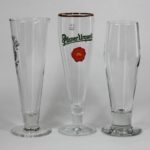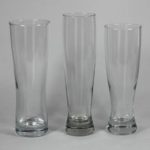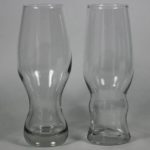Color: deep amber in color, Rogue’s Dead Guy Ale looks a lot like an amber ale. The head is frothy and white with little to no lacing as it settles.
Aroma: Bready notes of malt and a little biscuit without any suggestion of hops.
Taste: Sweet and malty with hints of honey and cane sugar. There are some slightly floral hop characteristics backing it up but the finish is smooth and clean.
Body: Medium bodied and slightly sticky this is an easy drinking beer.
Other Specs
- ABV: 6.8%
- No date visible on bottle or packaging but it’s the new label so we’re pretty sure it’s fresh.
Why That Glass?
Rogue’s Dead Guy Ale is an ale in the maibock style which gives us couple of different options for a Maibock. For Maibocks I’ll typically look for either a pilsner or a seidel.
For presentation purposes the pilsner is the way to go. You get a good look at the beer’s color while the narrower body and mouth help with head retention. With it’s spicy notes, the Dead Guy Ale, would go really well in a pilsner glass.
So why did we go with a seidel? When I opened the bottle and got my first whiff of the beer’s bready aroma I knew I was gonna have two or three of these. I could have gone for a pint but the aroma was so inviting I really wanted a little extra sense of it. Hence, seidel.
More About this Maibock
The Dead Guy Ale is a beer that I’m kind of surprised I haven’t had before. I’ve tried a lot of Rogue’s beers but for some reason this one has alluded me (or didn’t make an impression).




